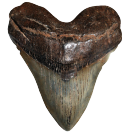COOPER RIVER DIVE CHARTERS
Trade and Commodities
The
traditional, and still evident, uses of land along the Cooper River
reflect the economic aspirations of the first South Carolinians for
economic prosperity. Carolina settlers spent most of the early years
herding cattle and hogs for export of beef and pork to Barbados and
other islands, as well as producing peas and grains. In the
meantime, a methodical search was employed in the areas around
Charles Town for a single commodity that would bring wealth and
prosperity such as tobacco was bringing to Virginia and sugar was
bringing to Barbados. The name of Silk Hope Plantation reflects the
early idea of growing mulberry trees (not the native ones) and
producing silk from caterpillars.25
A significant brickmaking industry also arose
along the Cooper River and was fully established by the 1740s, with
many brickmakers of Huguenot descent. Remains of the industry such
as those at Parnassus and the Brickyard near the Grove still survive
in the region. Brickmaking often occurred in the winter and spring
and could be a complimentary means of income to agriculture. The
demand for brick in nearby Charleston, the presence of rich clay
deposits along the lower section of the Cooper River and along the
Back River, and the presence of slave labor, all combined to ensure
a profitable brick industry. Much of the great architecture of the
city of Charleston includes brick made in this region, from
eighteenth century dwellings to St. Michael’s Episcopal Church.
Associated industries such as tilemaking at Redbank Plantation and
potteries such as that of John Bartlam at Cainhoy were also a
significant part of the Cooper River economy.27
Name of Multiple Property Listing Berkeley County, South Carolina
United States Department of the Interior
National Park
Service
National Register of Historic Places
Continuation Sheet

Help Report Manatee Sightings In SC




![]() Simply the Best In Blackwater Diving
Simply the Best In Blackwater Diving
![]()
Copyright 2008
S&J Ventures
260 Amy Drive
Goose Creek
